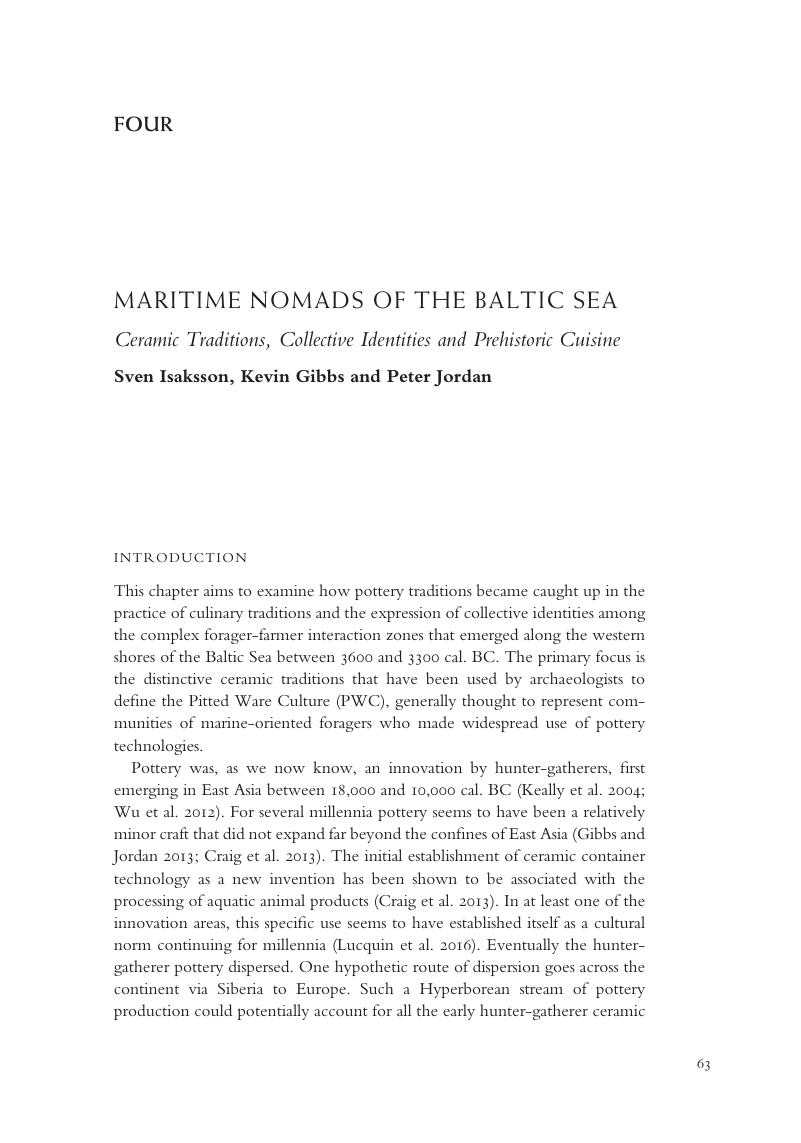Book contents
- Ceramics in Circumpolar Prehistory
- Ceramics in Circumpolar Prehistory
- Copyright page
- Contents
- Illustrations
- Tables
- Notes on Contributors
- One Cold Winters, Hot Soups and Frozen Clay
- Two Why Did Northern Foragers Make Pottery?
- Three Vessels on the Vitim
- Four Maritime Nomads of the Baltic Sea
- Five The Paradox of Pottery in the Remote Kuril Islands
- Six Understanding the Function of Container Technologies in Prehistoric Southwest Alaska
- Seven Ethnographic and Archaeological Perspectives on the Use Life of Northwest Alaskan Pottery
- Eight An Exploration of Arctic Ceramic and Soapstone Cookware Technologies and Food Preparation Systems
- Nine Ceramic Use by Middle and Late Woodland Foragers of the Maritime Provinces
- Ten Prestige Foods and the Adoption of Pottery by Subarctic Foragers
- Eleven Use of Ceramic Technologies by Circumpolar Hunter-Gatherers
- Index
- References
Four - Maritime Nomads of the Baltic Sea
Ceramic Traditions, Collective Identities and Prehistoric Cuisine
Published online by Cambridge University Press: 19 November 2018
- Ceramics in Circumpolar Prehistory
- Ceramics in Circumpolar Prehistory
- Copyright page
- Contents
- Illustrations
- Tables
- Notes on Contributors
- One Cold Winters, Hot Soups and Frozen Clay
- Two Why Did Northern Foragers Make Pottery?
- Three Vessels on the Vitim
- Four Maritime Nomads of the Baltic Sea
- Five The Paradox of Pottery in the Remote Kuril Islands
- Six Understanding the Function of Container Technologies in Prehistoric Southwest Alaska
- Seven Ethnographic and Archaeological Perspectives on the Use Life of Northwest Alaskan Pottery
- Eight An Exploration of Arctic Ceramic and Soapstone Cookware Technologies and Food Preparation Systems
- Nine Ceramic Use by Middle and Late Woodland Foragers of the Maritime Provinces
- Ten Prestige Foods and the Adoption of Pottery by Subarctic Foragers
- Eleven Use of Ceramic Technologies by Circumpolar Hunter-Gatherers
- Index
- References
Summary

- Type
- Chapter
- Information
- Ceramics in Circumpolar PrehistoryTechnology, Lifeways and Cuisine, pp. 63 - 80Publisher: Cambridge University PressPrint publication year: 2019
References
- 1
- Cited by



